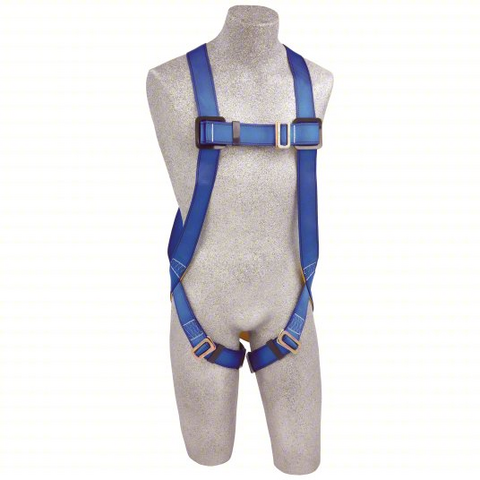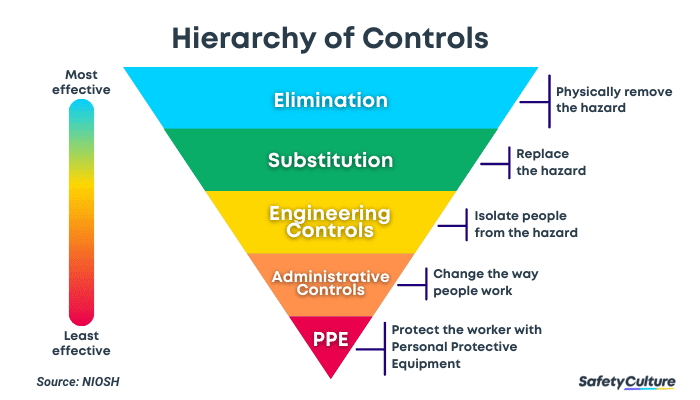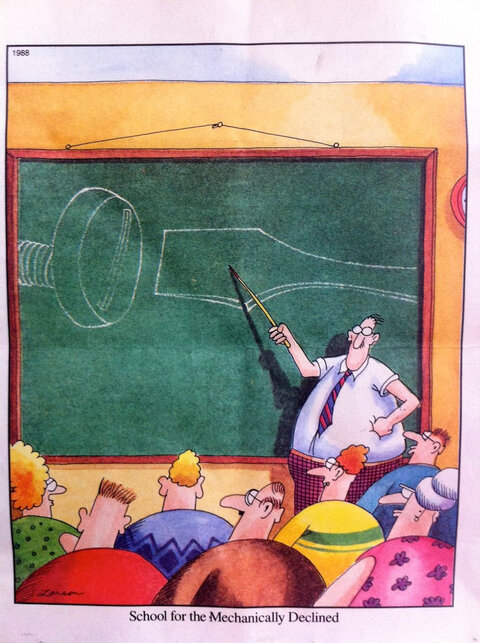I’m curious to hear your thoughts on this topic.I HATE the personal harness thing that we do in this industry. I get it, but I 100% think its a terrible policy.
You are using an out of date browser. It may not display this or other websites correctly.
You should upgrade or use an alternative browser.
You should upgrade or use an alternative browser.
OSHA 30
- Thread starterSteveB
- Start date
I would be too.I’m curious to hear your thoughts on this topic.
Devil's advocate: If someone has gone to the trouble of finding a harness that adjusts to fit them properly in a way that maybe another doesn't then there's an argument that, providing the personal harness is up to standard, denying the use of that harness is deliberately compromising safety for dogma.
For me the training helps change the culture of the work site. When people shift from the idea of "lets do it the fastest/safest/cheapest way possible" to "lets do it the safest way possible" more people are going to go home in one piece.Given the comments about "rotting your brain", I wonder:
Is this stuff effective because you *learn something*, or because *other people listen, now, when you tell them... because they know everyone's paying attention*...?
In the photos of a ladder in a scissor lift being picked up by fork lift everyone can see the danger and flag it as unsafe, being aware of less obvious danger and understanding how to think about work to prioritize safe working practices is where I found some some benefits of the OSHA 10 class.
I will speculate: because under The Act (OSHA), the EMPLOYER is responsible for the provision, inspection, maintenance, and use (including training for fitting, donning and doffing, etc) of the PPE. If the worker provides their own PPE, the employer may be unable to ascertain the suitability for specific use, how the harness is fitted, maintained, and inspected. The employer standardizing on specific brand/model of harness makes empoyer compliance more likely.I’m curious to hear your thoughts on this topic.
And the employer is still responsible for any incident, so it's reasonable to expect the employer to prohibit the use of worker-provided PPE, absent an employer program of scheduled, routine inspection, etc.
@Footer ?
There are specific guidelines from OSHA about employee supplied PFAS, and how employers are to deal with it. Specifically related to footwear, vision protections, and PFAS harnesses. The issue of proper sizing of a harness is often overlooked, in addition to the fatigue factor of wearing a harness that is not properly padded and fitted to the user.I will speculate: because under The Act (OSHA), the EMPLOYER is responsible for the provision, inspection, maintenance, and use (including training for fitting, donning and doffing, etc) of the PPE. If the worker provides their own PPE, the employer may be unable to ascertain the suitability for specific use, how the harness is fitted, maintained, and inspected. The employer standardizing on specific brand/model of harness makes empoyer compliance more likely.
Footer?
Crisp image
Well-Known Member
When employees come in a standarized size this will work but I don't fit in some harnesses because of my tall slender build (68kg or 150lbs) so I would opt for a harness that I know the history of and I look after.The employer standardizing on specific brand/model of harness makes empoyer compliance more likely.
@Footer ?
Here (in Australia) as long it is fit for purpose AND meets the required AS/NZS a harness is able to be used. If I invest in a harness that costs a small fortune I am going to look after it. A community harness is less likely to be looked after properly, cleaned when required and the list goes on. I do maintain the need for basic safety training and working at heights training simply because the kids of today have not had the exposure to things like climbing trees and exploring places. This comes from wrapping them in cotton wool because it is too dangerous instead of teaching them about hazards and the associated risks.
Regards
Geoff
By model, I do not mean the same size fits all; we know better. But if a venue keeps all Petzl Newton harnesses, for example, in multiple sizes, all of the inspection points are identical. The point is that in the USA the EMPLOYER is responsible for the provision, use, inspection, and removal from service of all PPE. Some employers (look at Footer) do not want to be responsible for items they did not approve, purchase, and then have to inspect and maintain. What happens when an employer tells a worker "you harness did not pass inspection, don't come back with it."? Or "we lack experience inspecting your special flavor of PPE, therefore you cannot use it on our property or on our time."When employees come in a standarized size this will work but I don't fit in some harnesses because of my tall slender build (68kg or 150lbs) so I would opt for a harness that I know the history of and I look after.
Here (in Australia) as long it is fit for purpose AND meets the required AS/NZS a harness is able to be used. If I invest in a harness that costs a small fortune I am going to look after it. A community harness is less likely to be looked after properly, cleaned when required and the list goes on. I do maintain the need for basic safety training and working at heights training simply because the kids of today have not had the exposure to things like climbing trees and exploring places. This comes from wrapping them in cotton wool because it is too dangerous instead of teaching them about hazards and the associated risks.
Regards
Geoff
I own two harnesses and several shock absorbing lanyards because I free lance and I am the employer. But on the clock as an IATSE rigger, I wear what the employer provides, and if I find the harness unsafe, I take it down to Human Resources and turn it in for inspection and select another. Only if that is also in objectionable condition or cannot be made to fit correctly will I use my own PPE.
Surely if the EMPLOYER has the responsibility and final say you'd be thrown off the job for using your (personal) kit. You're objecting to secondary kit that had to be issued because the original issue didn't suit you, remember?Only if that is also in objectionable condition or cannot be made to fit correctly will I use my own PPE.
Crisp image
Well-Known Member
Size is one thing style is another. Petzl make great harnesses (my choice in the past) but does it really fit? Even if properly adjusted it may not fit. So better than stocking multiple sized harnesses a couple of different brands or models would be better. A competent person inspecting a harness no matter what brand should be able to find faults (because the faults are all the same sorts of things- abrasion, stitching, stretching , dates, connection points and the list goes on). I am ultimately responsible for my own heath and safety when I put on a harness that I inspect before use. Out OHS act says a couple of things but not limited too "By model, I do not mean the same size fits all; we know better. But if a venue keeps all Petzl Newton harnesses, for example, in multiple sizes, all of the inspection points are identical. The point is that in the USA the EMPLOYER is responsible for the provision, use, inspection, and removal from service of all PPE. Some employers (look at Footer) do not want to be responsible for items they did not approve, purchase, and then have to inspect and maintain. What happens when an employer tells a worker "you harness did not pass inspection, don't come back with it."? Or "we lack experience inspecting your special flavor of PPE, therefore you cannot use it on our property or on our time."
I own two harnesses and several shock absorbing lanyards because I free lance and I am the employer. But on the clock as an IATSE rigger, I wear what the employer provides, and if I find the harness unsafe, I take it down to Human Resources and turn it in for inspection and select another. Only if that is also in objectionable condition or cannot be made to fit correctly will I use my own PPE.
Employees must take reasonable care for their own health and safety and the health and safety of people their work may affect. Employees should:
- not engage in behaviour that could harm people
- not take short-cuts which could reduce the level of safety
Employers have a duty to protect the health and safety of employees while at work by providing and maintaining a working environment that is safe and without risks to health.
Which includes providing safe systems of work, training, education and supervision, and a whole host of other things including the overall safety of a site.
and we all know that you can't help stupid!
In different countries we have different rules and regulations that are all trying to do one thing.......Get people home in one piece to their family and friends. I am sure we all agree on that statement.
Stay safe. Call out unsafe acts and lets go home tonight.
Regards
Geoff
Yes, and it's only if there is no other alternative. I will perform the work at that call and then cancel or decline further work at height with that employer until suitable PPE is provided. That's a choice I, and I alone make. I could be fully dismissed for using my own, and I accept that. I have a union to grieve the termination. As for what is provided "not suiting me", the only reason to decline would be if the PPE was incorrectly sized (too big/small) or found to fail pre-use safety inspection. That's not a whim, it's personal responsibility AND my obligation to report to the employer any unsafe PPE or other work conditions. Hand me the next item and if it passes my check list, I put it on. Not sure what is difficult to understand here.Surely if the EMPLOYER has the responsibility and final say you'd be thrown off the job for using your (personal) kit. You're objecting to secondary kit that had to be issued because the original issue didn't suit you, remember?
What Rigger?
I'm so fly....I Neverland.
But also get ready to see it more and more; I've got a few emails to catch up on with my local's training committee, but I am pretty sure the TTF is telling us how to get people reimbursed for these sorts of classes as 10/30 and beyond become requirements.I believe it’s actually a NY state law that is requiring Osha 10/30.
What Rigger?
I'm so fly....I Neverland.
There is no depth to which I will not sink to be an engaging instructor/presenter even when the material is NOT dry as these things tend to be. I want people to retain this stuff like y'all don't even know.
Sorry missed the thread, LONG week.I’m curious to hear your thoughts on this topic.
I am not against people using their own stuff. Assuming someone who knows what they are doing inspects the equipment before use and makes sure its proper I'm fine with that. What I hate is that being the standard. So many venues go "we have to buy harnesses" and go to the local safety supplier and buy this:

We've all been in that venue. We've all seen that hanging on the wall (if you are lucky, usually its in a bucket or something).
So, instead of an employer actually buying stuff that fits their employees, we are stuck with a system where everyone just shows up with whatever and its the PM's job on site to either NGAF or have to inspect 30 different harnesses and hope it all works out. Instead, if employers went to their employees, got them fitted, and had a harness for each employee we'd be way better off. Employees would have more money in their pockets. Employers would be covered. Off to work we go.
I don't get why this is so hard. Sure, you have a population of roving pirates working for you. Your going to allocate equipment to people that won't work for you but one or two times. But... this CAN be done. It blows my mind how many IA halls say the requirements to be a rigger are owning a haul line and a harness. This should not be an employees responsibility! No other industry does this. It drives me up a wall that we do.
We have 8 harnesses in our venue and have a massive range in body types. The harness we stock is a top of the line Miller, we have it in 3 sizes. Everyone can adjust and get into one. Both our spot positions require wearing one along with a few other spots besides rigging. This isn't hard. We shouldn't have to accept bring your own harness as standard.
Last edited:
(As an employer) I strongly prefer an employer provided harness. We provide them for all our direct employees.
I haven't had that fight with my local. They have top notch riggers, and provide their own equipment. Maybe just because I'm old enough to remember having a screaming match with the head rigger at a local venue to even WEAR a harness, much less clip into anything, I'm grateful that everyone is wearing them now.
I think locals are the biggesttrouble misunderstanding spot. They fall into a very weird place for employment status, and function much more like an external vendor, but legally are employees. I wonder if there's something that the IA could set up nationally that would cover both the locals best interest, and employers needs that would make us all happy.
I haven't had that fight with my local. They have top notch riggers, and provide their own equipment. Maybe just because I'm old enough to remember having a screaming match with the head rigger at a local venue to even WEAR a harness, much less clip into anything, I'm grateful that everyone is wearing them now.
I think locals are the biggest
RonaldBeal
Well-Known Member
I recall, when truss spots were more common, spot ops being required to wear the lighting vendor required harness AND the venue/local requiring the employer supplied harness. It was not uncommon for truss spot ops to be wearing two harnesses simultaneously. The lighting vendor, which also supplied the horizontal life lines, vertical life lines, truss, ladders etc, asserted that it was all designed to work as a system, and that is what the engineer signed off on, and so that is what insurance signed off on. They wouldn't allow someone not wearing their harness up. Period. The venues and locals had similar rules for employees, because they were employees, and thus the employers responsibility.
Sometime bureaucracy wins out over common sense.
Sometime bureaucracy wins out over common sense.
Last edited:
I am thankful I started my career towards the end of the truss spot era. The last show I was on that used them needed 7. It was a mess to get that many ops up during change over, and in smaller markets we would be lucky to get four folks who had done it before. Around 2015/2016 everything started shift to remotely operated spots and I don't think I've had to load a truss spot since. Now the hazard has been reduced to keep the ops awake and of their phones during the show. There is a reason elimination is the most important section on the hierarchy of controls.

Similar threads
- Replies
- 0
- Views
- 606
- Replies
- 1
- Views
- 3K
- Replies
- 0
- Views
- 782
Users who are viewing this thread
Total: 1 (members: 0, guests: 1)



